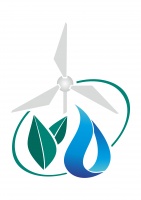Comparison of practices
| Название практики | Increasing water availability of pastures by constructing sardobas | Using combined-type drainage in Fergana Region |
|---|---|---|
| Category | Water resources | Water resources |
| Tool | System for enhancing water availability | Collector-drainage system |
| Field of application |
|
|
| Usability of practice for adaptation to climate change | Moderate | Moderate |
| Implemented by | Ministry of Nature Conservation of Turkmenistan |
Management Department of the Foundation for Reclamation Improvement of Irrigated Land |
| Used by |
Country: Turkmenistan |
Country: Uzbekistan Province: Fergana Region District: Kuva District Other settlement: Khamroli-Ota Farm |
| Local specifics | 17,238 ha of barkhan (sand dune), takyr (dry-type playa) and solonchak (moist-type playa) sites of the Kara Kum Desert; deep ground water occurrence |
The site is located in the zone of ground water shallow occurrence |
| Practice usage period |
Start date: 01.01.2012 End date: 31.12.2016 |
Start date: 01.01.2010 End date: 31.12.2012 |
| Problem solved through this practice | Desertification and decreased productivity of desert pastures due to over-grazing around existing cattle watering sites |
Flooding of settlements; salination of irrigated land |
| Tools used in the practice | Technology of building sardobas (stone-dome covered water collection and storage reservoirs) to enhance pasture water supply |
GIS-technologies and remote-sensing tools |
| Description of the practice and its results | Main actions:
Actions:
Results:
|
In 1980, specialists of NPO SANIIRI (Research and Development Association “Central Asian Research Institute of Irrigation”) designed and for the first time applied this type of drainage in the Qarshi Steppe where it demonstrated its efficiency. The project was suspended due to lack of funding. The re-launch of the project and installment of a combined drainage system in Kuva District (2010) once again confirmed its high efficiency and profitability, especially in areas of confined underground waters. Further on, the model was applied in Rishtan, Altyarik and Baghdad Districts where it is successfully working. Actions:
Results: Financial and economic: Specific construction costs (sum/ha) of the combined drainage system were twice less compared to horizontal drainage models. Vertical drainage of 1 hectare of land requires 700-800 kWh of energy, whereas the combined drainage is hyperpiestic. Maintenance costs for combined drainage systems are also much lower compared to horizontal and vertical drainage models – specifically, twofold less than for closed horizontal and threefold less for vertical. The combined drainage systems also allowed increasing crops productivity. Technical: The reclamation condition of farm land has improved. |
| Lessons learnt and recommendations made | Lessons learnt: Construction of sardobas in takyr areas allows enhancing pasture water supply, thus, leading to the restoration of over-grazed pastures. Recommendations: The practice requires long-term planning and an integrated response with the early-on engagement of desertification experts (designing a set of measures to protect takyrs from sand drifts), state agencies (technical assistance) and pasture users (observance of pasture rotation schemes, prevention of takyrs from contamination and pollution). |
Lessons learnt: The practice has confirmed its high efficiency and profitability of combined-type drainage, especially in areas with confined underground water. Recommendations: It is necessary to widely apply combined-type drainage where hydro-geological conditions allow it. |
| Source of practice | Traditional tools transferred from generation to generation that proved their efficiency in modern conditions |
R&D product by NPO SANIIRI (Research and Development Association “Central Asian Research Institute of Irrigation”)
|
| Readiness for implementation |
1. Cost of implementation: Low 2. Approximate cost of investment per 1 ha: $1,000-5,000 3. O&M costs: Low 4. Expert support: Needed at implementation stage |
1. Cost of implementation: High 2. Approximate cost of investment per 1 ha: 3. O&M costs: High 4. Expert support: Not needed |
| Brief information on the project | Project title: Responding to climate change risks for dekhan farming system of Turkmenistan on national and local levels. Project duration: 2012-2016. Project goal and objectives: build the adaptation capacity to respond to climate change impacts, including variability on local and national levels. Project beneficiaries: Bori Settlement (over 1,100 people) and Bo-Kurdak Settlement (about 4,500 people). Project implementer: Ministry of Nature Conservation and UNDP |
Project title: Application of GIS-technologies for reclamation. Project duration: Jan 2010-Dec 2012 (3 years). Project goal and objectives: comprehensive support of Reclamation Expedition (RE) specialists; introduction of new technologies; enhancing RE technical capacities to ensure a more expedient implementation of projects to improve the reclamation condition of irrigated land with the aim of receiving better agricultural yields with the simultaneous maintenance of environmental equilibrium in the area. Project beneficiaries: Fergana Region and Syr Daria Region Reclamation Expeditions. Project implementer: Management Department of the Foundation for Reclamation Improvement of Irrigated Land. |
| Funding source | Government of Turkmenistan, Adaptation Facility | UNDP |
| Information sources | Ekologicheski Vestnik (Environmental Digest) Journal, Issue 11, 2012 (http://lrf.uz/?p=283&lang=ru).
|
|
| Contacts of a person, who filled this form | SIC ICWC |
SIC ICWC |
| Form submission date | 04.04.2018 | 19.04.2018 |




